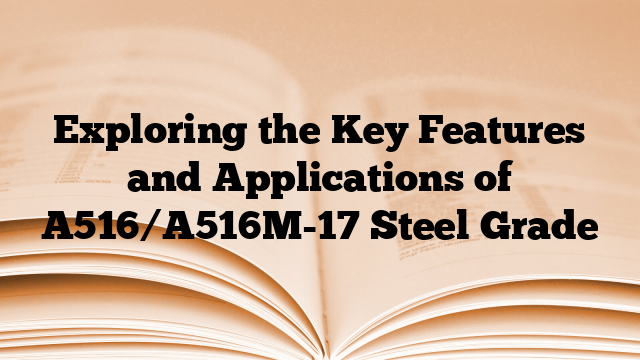The ASTM A516/A516M-17 steel grade is a specification for pressure vessel plates, carbon steel, for moderate- and lower-temperature service. It is commonly used in the fabrication of welded pressure vessels where improved notch toughness is important.
1. Chemical Composition:
The chemical composition of A516/A516M-17 steel grade consists of carbon (C), manganese (Mn), phosphorus (P), sulfur (S), silicon (Si), and traces of elements such as copper (Cu), nickel (Ni), chromium (Cr), and molybdenum (Mo). The exact composition depends on the required strength and other mechanical properties.
2. Mechanical Properties:
The A516/A516M-17 steel grade exhibits good mechanical properties, including tensile strength, yield strength, elongation, and impact resistance. The tensile strength ranges between 415 and 550 MPa, while the yield strength ranges between 220 and 260 MPa. It has a minimum elongation of 21% and a minimum impact resistance of 27 J at the specified temperature.
3. Standard Number:
The A516/A516M-17 steel grade is defined by the ASTM A516/A516M standard, which specifies the requirements for carbon steel plates used in pressure vessels. The “17” in A516/A516M-17 represents the year of the standard’s revision.
4. Applications:
The A516/A516M-17 steel grade finds extensive applications in various industries, primarily in the manufacturing of pressure vessels. These vessels are used in oil and gas, petrochemical, power generation, and other industries where the containment of pressurized fluids or gases is required. A516/A516M-17 steel grade offers excellent weldability, making it suitable for fabrication processes such as welding, forming, and machining.
In conclusion, the A516/A516M-17 steel grade is a carbon steel specification commonly used for pressure vessel fabrication. It offers good mechanical properties, suitable chemical composition, and is applicable in various industries that require the use of pressure vessels.

